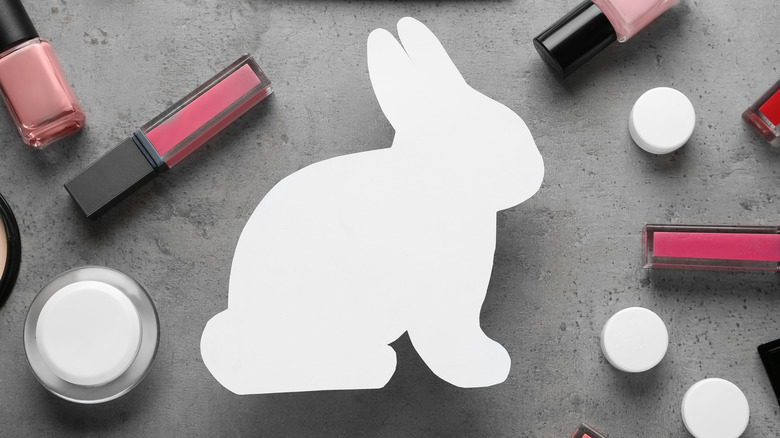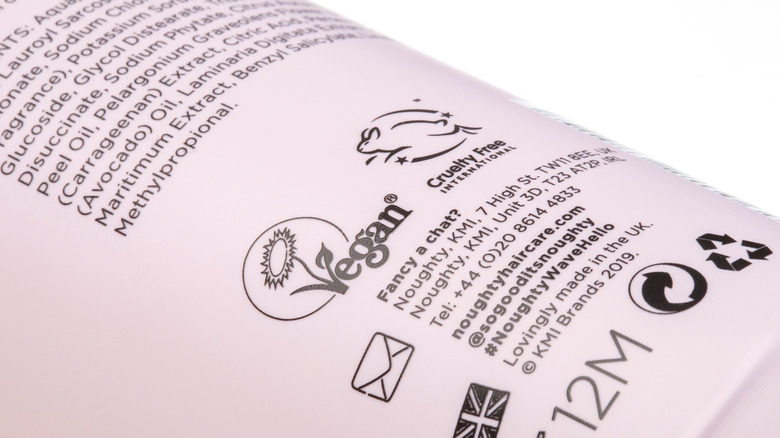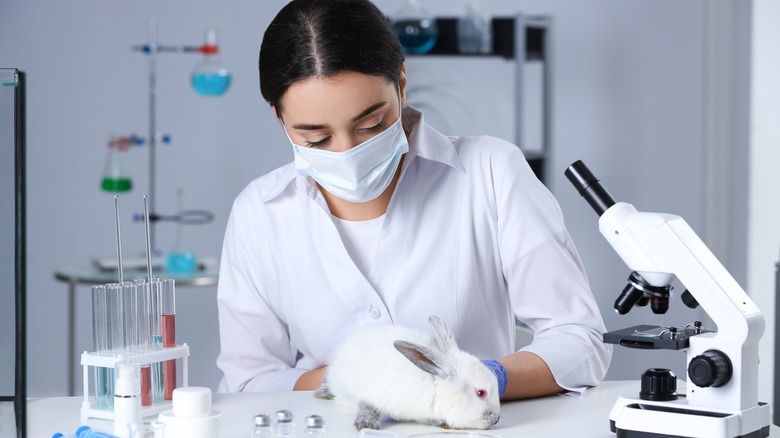Bunnywashing: What The Beauty Industry Term Means (& Why You Should Look For It)
Ask anyone if animal testing in the beauty industry is okay, and you're unlikely to receive an affirmative answer. The general consensus among most people is that animal testing and animal cruelty are both immoral concepts and shouldn't be utilized in the production of cosmetics. Where things get blurry is if you follow up with a question asking someone to identify a way in which animal testing is conducted or what they know about the history of animal testing in the cosmetic, beauty, and similar industries. To these latter questions, it's a safe bet that the average person won't be knowledgeable about the timeline of animal use for product testing and the manners in which animal testing is carried out.
This is where bunnywashing comes in, which is more or less the glossing over of potential animal cruelty that continues in various industries today.
As reported by The Humane Society of the United States, animal testing in the U.S. has been a practice utilized for nearly a century, coming into common use back in the year 1938. The practice of animal testing came about due to requirements of the Food, Drug and Cosmetic Act, which set out requisite parameters stating that all products intended for human cosmetic use should be tested for safe use prior to being sold on the market. Following additional practices developed to test the potential eye and skin irritation of products, animal testing ballooned and became the norm.
The bunny symbol is vague, undefined, and unregulated
In the 21st century, it's ideal to think that animal testing should be a thing of the past. Unfortunately, it isn't. Modern beauty and cosmetic companies promote a supposed lack of animal testing by placing the symbol of a bunny on their products to convince buyers that they're an ethical company when it comes to eliminating animal cruelty in product testing. The caveat is that there isn't any official regulation of what constitutes a cruelty-free product in the United States, meaning that the bunny symbol isn't regulated.
Because there isn't regulation of animal testing in cosmetic production or an official definition of cruelty-free products, many companies use the bunny symbol on their products even if the full production process isn't completely cruelty-free. This is being termed "bunnywashing," the practice of companies placing the bunny symbol on packaging to insinuate that they're ethically cruelty-free even if their lack of animal testing only occurs during the final production stage of the item.
This means that earlier cosmetic prototypes of the same products may be tested on animals, but because the final version placed on the market hasn't involved animal testing, the company utilizes the bunny symbol for its benefit.
How bunnywashing happens
The U.S. Food and Drug Administration (FDA) reports that there are two labels used by companies to indicate a lack of animal involvement, which are "cruelty-free" and "not tested on animals," though neither label is issued or regulated by the FDA itself. Instead, companies can use the labels at will, regardless of compliance with cruelty-free testing processes. Both of the terms are unrestricted in their usage since there aren't legal definitions, official regulations, or oversight for them, which the FDA states will lead companies to claim "cruelty-free" or a lack of animal testing, even when animal testing has been conducted on the company's products.
The FDA notes that a common practice is for companies to send the initial versions of their products to third-party laboratories which perform animal testing of the products. When the products are returned post-testing, the companies can circumvent admissions of animal cruelty since they technically haven't engaged in animal testing within their own operations. If this sounds alarming to you, that's because it is.
Given that the cruelty-free symbols on products sold in the United States aren't regulated and therefore can be placed on any product without proper oversight and confirmation that animal testing was avoided throughout the entire production process, there's a call to action for consumers to become aware of the ingredients in cosmetic and beauty products and to hold companies accountable for being transparent about the ethics of their entire production process.


